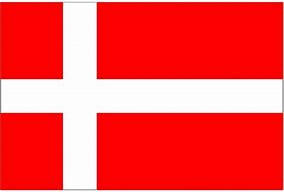
Other places of interest and excursion destinations in other countries:
 |
 |
 |
 |
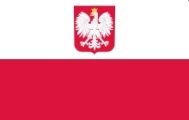 |
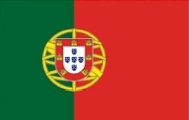 |
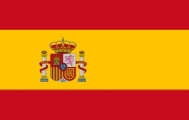 |
 |
FR |
IT |
MT |
NL |
PL |
PT |
ES |
DE |
Selected cities in Toscany
Lake Garda:
by Lars Haagen Petersen
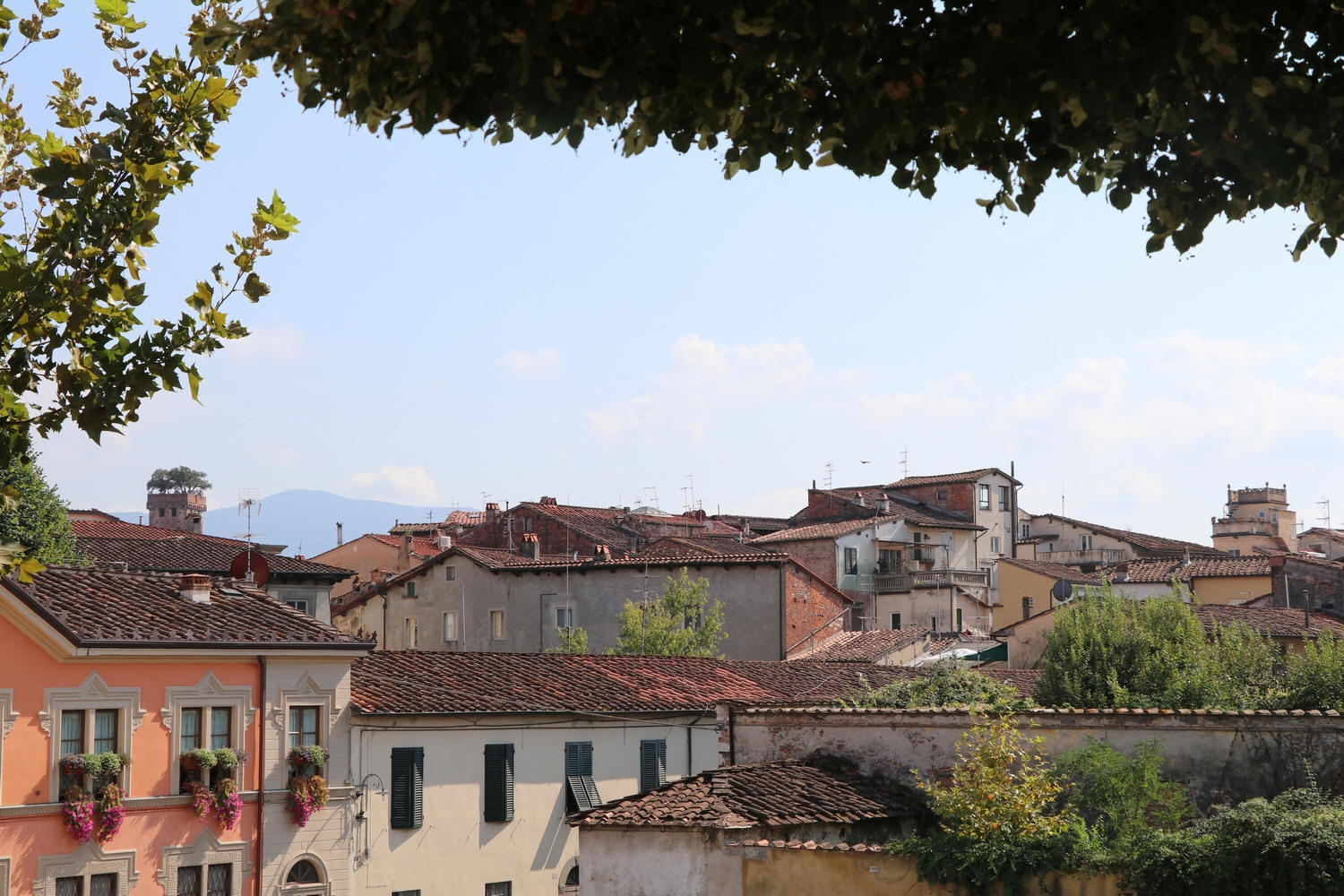
Lucca - S
ummer 2018When talking to people who have visited Tuscany, the small fortress town of Lucca is one of the places they typically highlight. Lucca, located halfway between Pisa and Florence, is considered one of the most beautiful cities in Tuscany. A walk through the historic old town reveals many beautiful attractions, picturesque alleys and charming squares. This is also where you will find Torre Guinigi, the famous tower with the trees on top and the impressive 4 km long city wall, which is one of the best preserved in Europe.
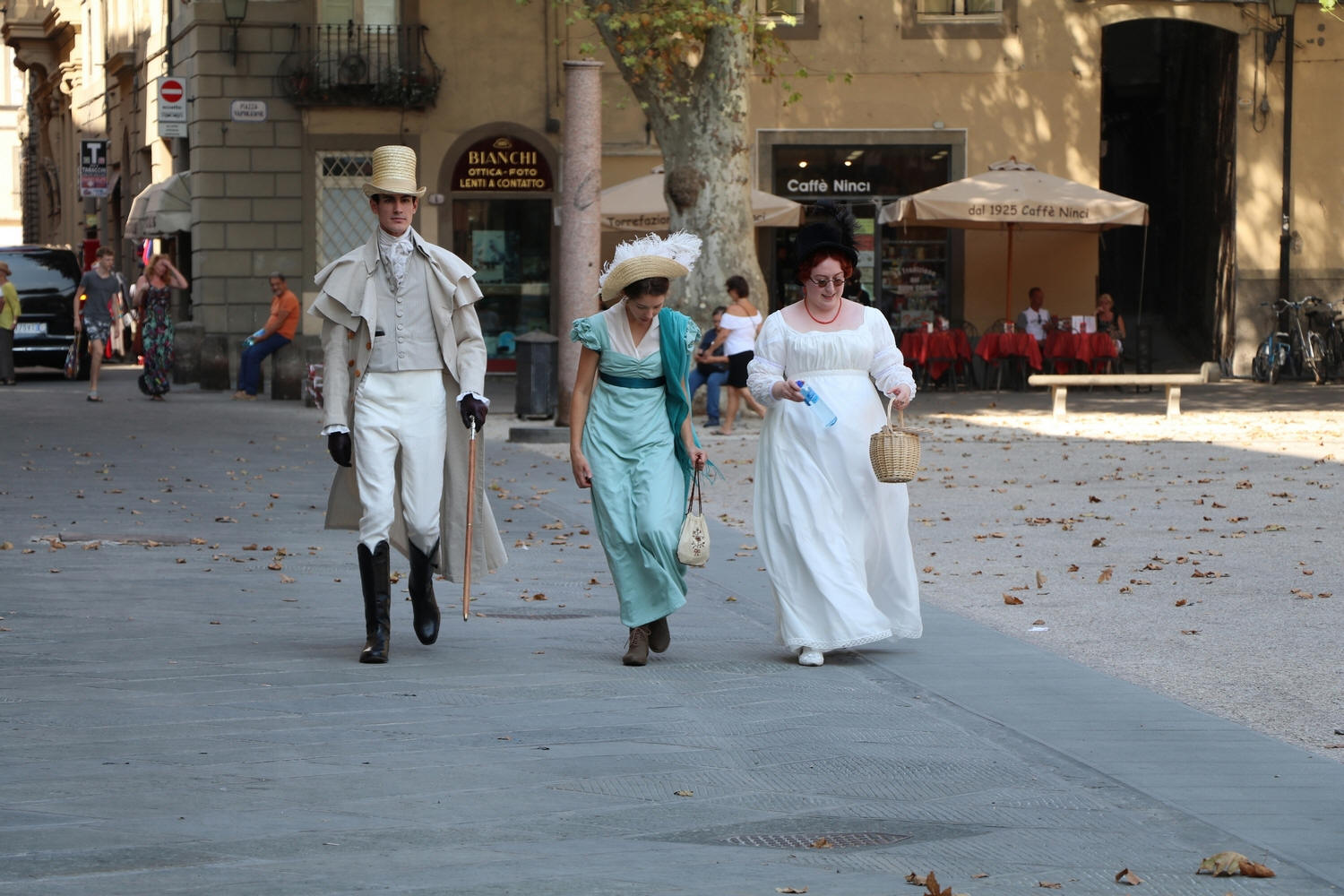
Dressed for afternoon tea - Lucca summer 2018

Wanted
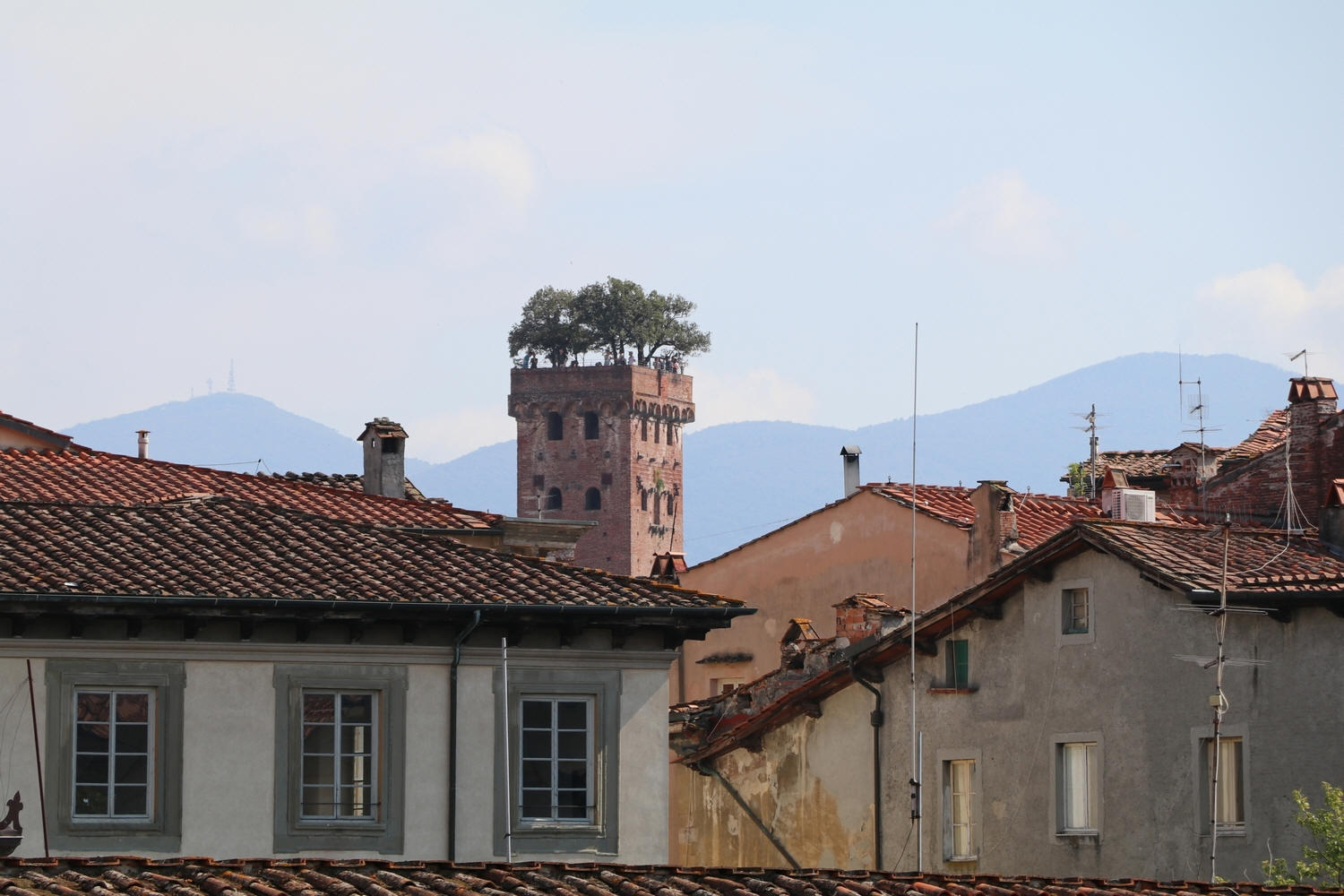
Torre Guinigi, the famous tower with the trees on top is seen in the background - Lucca - Summer 2018
Torre Guinigi is built of red bricks and on top
are planted several old stone oak trees. It approx. the 40-meter-high
Guinigi Tower is one of the few remaining tower houses in Lucca. It is
believed to have been built in 1384 by wealthy silk merchants, and
although no one knows exactly how old the roof garden is, it dates back
at least to the 17th century, as can be seen from old drawings of the
town.
When there were most towers in Lucca, there were approx. 250. These were
primarily intended to protect the population from enemies, but were also
status symbols. Today there are only 9 tower houses left in the old
fortress town. The towers were built in the 14th century after the
plague had ravaged Italy and as Tuscany had been repeatedly plagued by
violent diseases, raids and civil war, it made sense to have its own
personal defense tower.
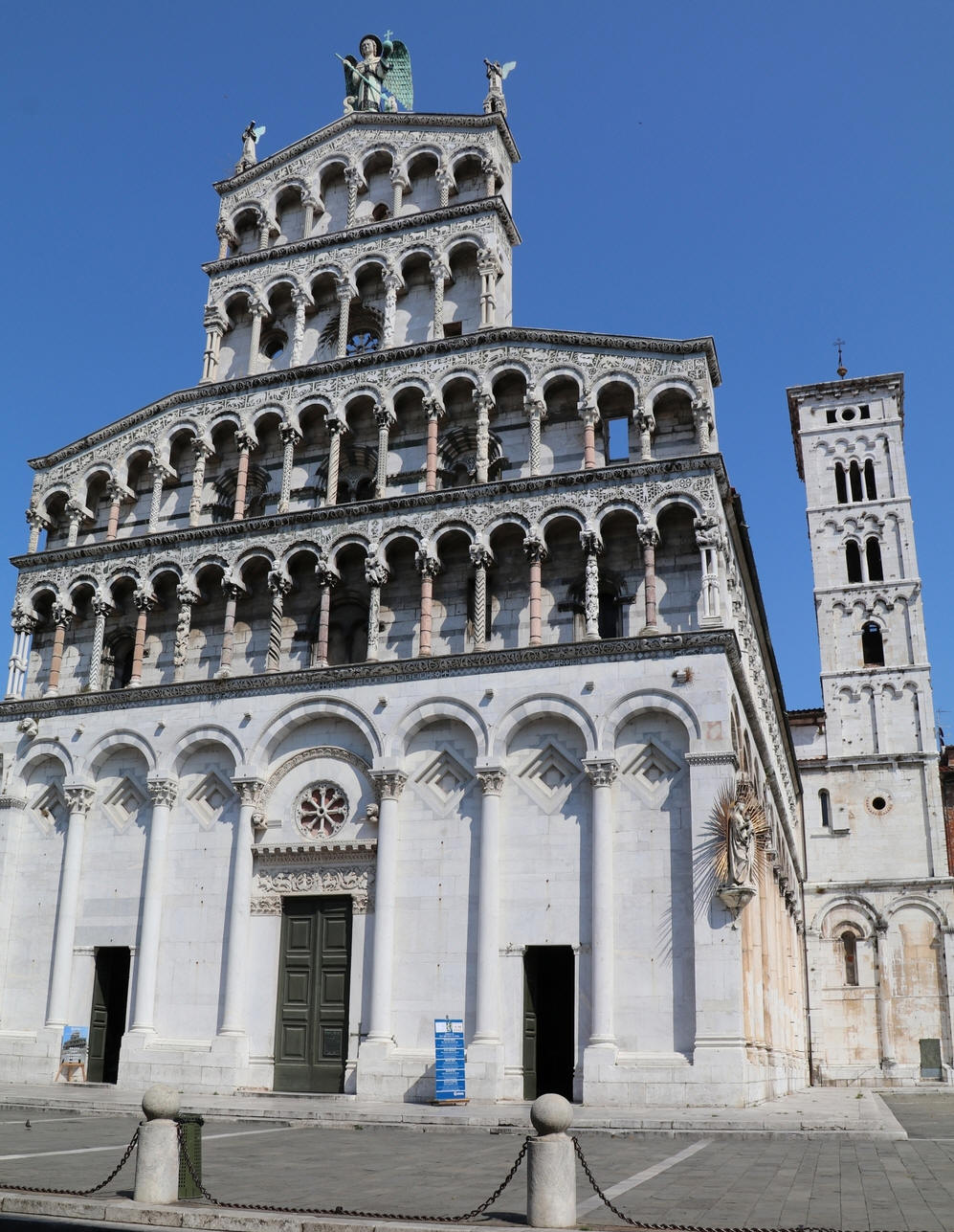
Chiesa di San Michele in Foro - Summer 2018
The Church of San Michele in Forno is dedicated to the Archangel St. Michael and already existed in the 8th century and is probably from the Longobard period. Shortly after the construction, a "hospital" was added so that one could receive pilgrims traveling via the Francigena pilgrimage route. Among these pilgrims was the "holy Davino" - an Armenian whose relics are found under the altar of the church. In the first part of the 11th century, Bishop John II added this crypt.
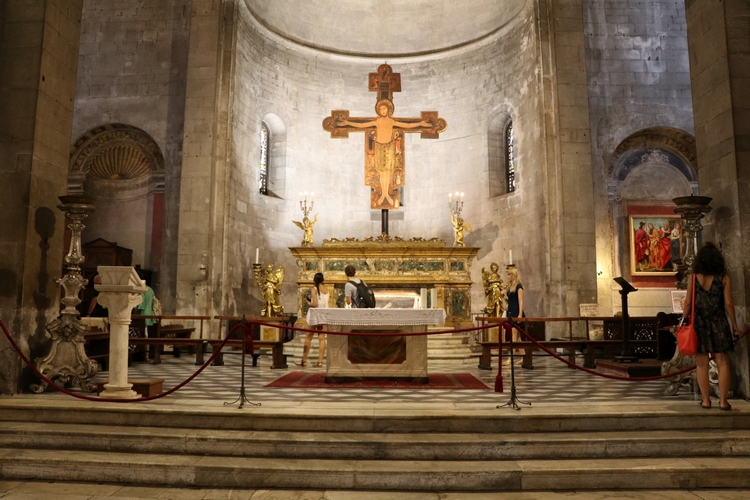
Chiesa di San Michele in Foro - S
ummer 2018The church itself as it is seen today is the result of the reconstruction that took place in the second half of the 11th century under Pope Alexander II, Bishop of Lucca. He was one of the most important figures in the Gregorian Reformation, whose purpose was to return to original pure moral values. Construction continued in the 12th century until 1383, when the facade was finally completed.
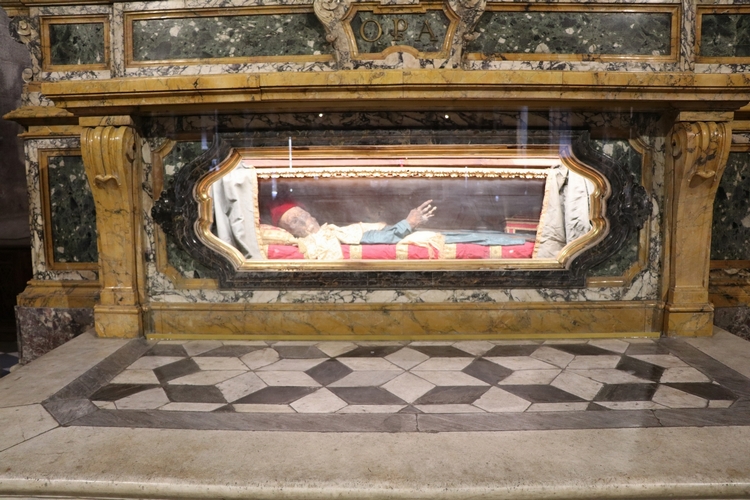
Pilgrim San Davino's mummy - Summer 2018
The pilgrims stopped
at the Church of San Michele to recreate and to take the opportunity to
honor their famous traveling companions, such as San Davino - an
Armenian pilgrim who died during his stay in Lucca on his way to
Santiago de Compostela. A trip of 5,500 km or more depending on whether
you sail some of the way. It is claimed that his body has acquired
supernatural powers after his death.
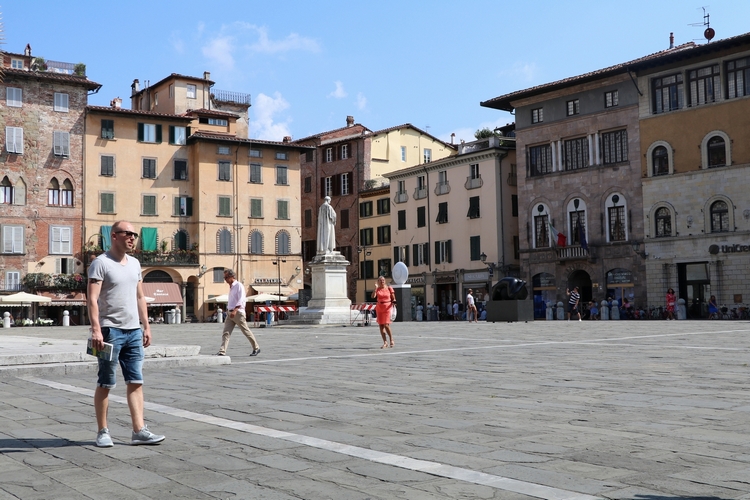
Piazza dell' Anfiteatro - Summer 2018
Piazza dell 'Anfiteatro is built on
the remains of the ancient Roman amphitheater, which was built in the
1st or 2nd century AD. When the amphitheater fell into disrepair after
being robbed of all its pillars, it was used as a garbage dump for
centuries. Later, houses and palaces were built on the ruins of the old
amphitheater, following the elliptical shape of the amphitheater.
The current space is the result of the work of Lucca architect Lorenzo
Nottolini, who in 1830 cleared the arena's central space of the
buildings that had been built there over the centuries.
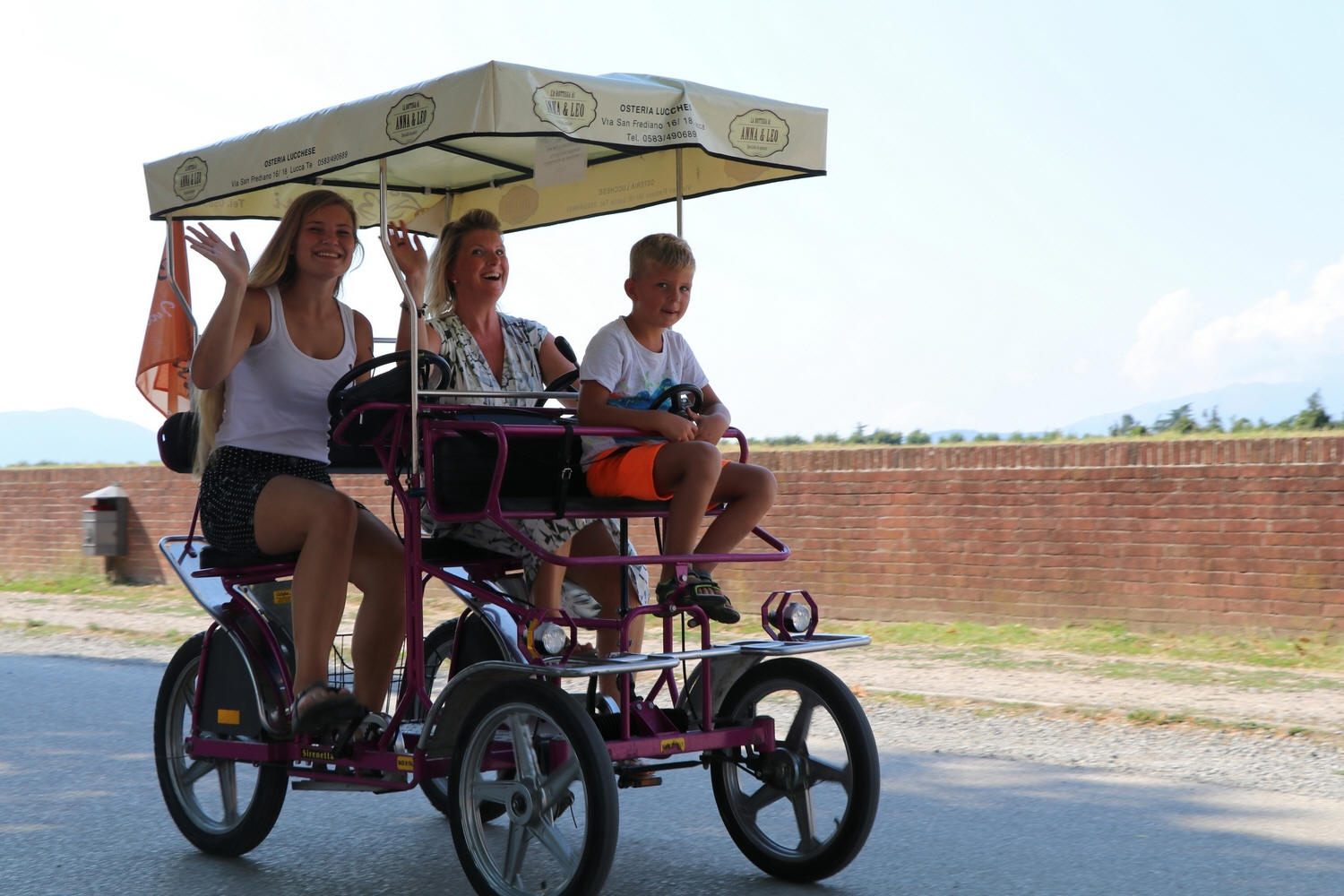
A trip around the four kilometer long city wall in Lucca - Summer 2018
Lucca fought for its own identity for centuries after defending itself against several conquests and rulers, including the Spanish Emperor Charles II and Napoleon, who crowned his sister Princess of Lucca.
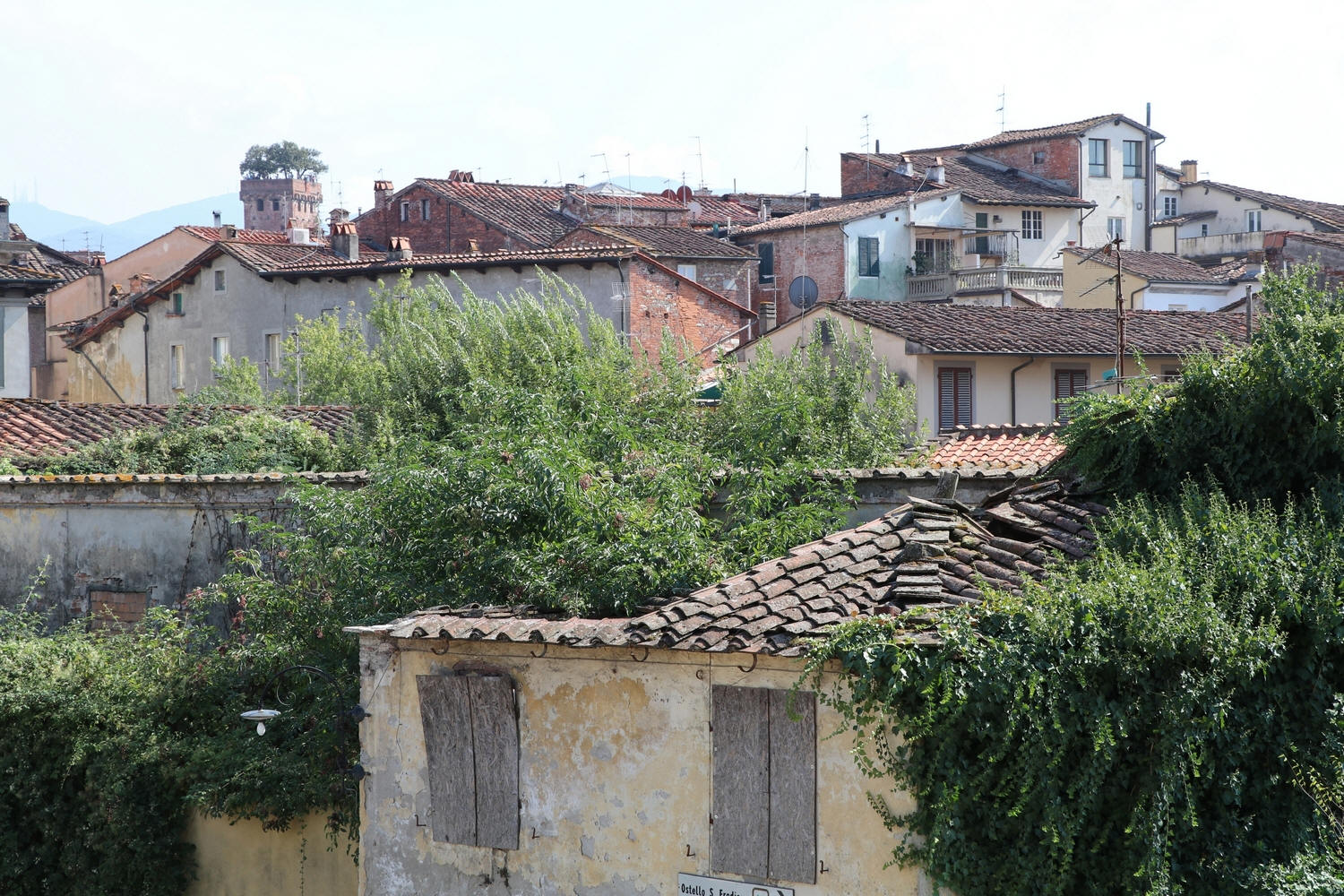
Lucca - S
ummer 2018Not all cities and houses are equally well-maintained, but that doesn't necessarily make them any less interesting or beautiful for that matter. The above photo was taken in Lucca and Torre Guinigi is visible in the background.

St Martin's Cathedral in the background - Summer 2018
The Cattedrale di San Martino is a Roman Catholic cathedral dedicated to
Saint Martin of Tours in Lucca and home to the Archbishop. Construction
began in 1063 by Bishop Anselm the later Pope Alexander II.
The cathedral nave and the cross of the cathedral were rebuilt in Gothic
style in the 14th century, while the western front was begun in 1204 by
Guido Bigarelli of Como.
In the nave there is a small octagonal temple which contains the most
precious relic of Lucca. 'Holy face of Lucca' - A cedar-wood crucifix
and image of Christ which according to legend was carved by Nicodemus
and miraculously led to Lucca in 782. Christ is dressed in colobium, a
long sleeveless garment. The chapel was built in 1484 by Matteo
Civitali, the most famous Luccan sculptor of the early Renaissance.
Andre glimrende rejsemål
/Other fine destinations
:Ni breve til geheimearkivar m.m. C. F Wegener:

